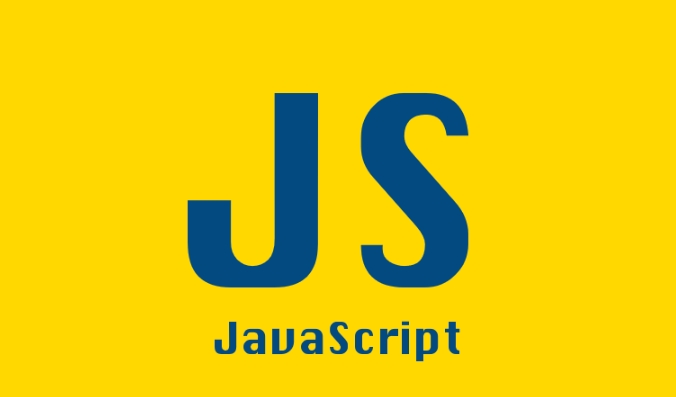Always label logs or use object shorthand like console.log({user, items}) for clarity. 2. Use console.table() for readable display of arrays and objects in browser environments. 3. Group related logs with console.group() or console.groupCollapsed() to organize output. 4. Use console.trace() to log the call stack and track execution flow. 5. Remove console.log statements before production to avoid data leaks and performance issues. 6. In async code, log before and after operations to track state and use console.error for errors. Additionally, leverage string interpolation, styled logs, counters, and timers to enhance debugging efficiency. By using console.log intentionally with these practices, you gain deeper insight into state, flow, and context, making it a powerful tool for effective debugging.

console.log is one of the most commonly used tools in JavaScript debugging — simple, fast, and available in every browser and Node.js environment. While it might seem basic, using it effectively can save you time and make debugging much more efficient. Here’s how to get the most out of console.log without relying on more complex tools unnecessarily.

1. Log Meaningful Labels with Variables
One common mistake is logging variables without context:
console.log(user); console.log(items);
If you're scanning through many logs, you won’t know which output belongs to which log statement.

? Instead, label your logs:
console.log('User data:', user);
console.log('Items list:', items);Or use object shorthand for even clearer output:

console.log({ user, items });This prints { user: ..., items: ... }, clearly showing both the variable name and its value — super helpful when logging multiple values at once.
2. Use console.table for Arrays and Objects
When dealing with arrays of objects or complex data structures, plain console.log can be hard to read.
? Use console.table() for cleaner visualization:
console.table(users); // Great for arrays of objects
This displays data in a table format in browser dev tools, making it easy to scan rows and columns.
Note:
console.tableworks best in browsers; support in Node.js may vary.
3. Group Related Logs with console.group
If you’re logging multiple related pieces of information (e.g., inside a function or loop), group them to keep the console organized.
console.group('Processing User Login');
console.log('User:', user);
console.log('Token generated:', token);
console.log('Redirecting to:', redirectUrl);
console.groupEnd();You can even use console.groupCollapsed() to keep logs folded by default:
console.groupCollapsed('API Response Details');
console.log('Status:', response.status);
console.log('Data:', response.data);
console.groupEnd();This keeps your console tidy during heavy debugging sessions.
4. Log Call Stack with console.trace
Sometimes you know what is being logged, but not where it’s coming from — especially in deeply nested functions or event handlers.
? Use console.trace() to log the current call stack:
function saveUser() {
validateUser();
}
function validateUser() {
console.trace('Validation triggered');
}This shows the sequence of function calls that led to the trace, helping you follow execution flow.
5. Avoid Leaving console.log in Production
console.log statements left in code can:
- Leak sensitive data
- Slow down performance (especially in loops)
- Confuse other developers
? Best practices:
- Remove or comment out logs before committing
- Use lint rules (e.g., ESLint
no-console) to catch them - In production builds, consider polyfilling or stripping logs via bundlers like Webpack or Vite
If you need persistent logging, use a proper logging library instead.
6. Log Intermediate States in Async Code
Asynchronous code (Promises, async/await) can make debugging tricky because of timing issues.
? Add logs before and after async operations:
async function fetchData() {
console.log('Fetching data...');
try {
const res = await fetch('/api/data');
console.log('Response received:', res);
const data = await res.json();
console.log('Parsed data:', data);
return data;
} catch (err) {
console.error('Fetch failed:', err);
}
}Use console.error for errors — it stands out visually and may still appear even if regular logs are filtered.
Bonus Tips
String interpolation works:
console.log(`User ${id} logged in at ${new Date()}`);Style logs (in browsers):
console.log('%cImportant message', 'color: red; font-weight: bold');Count occurrences:
console.count('fetch called');Time function execution:
console.time('fetchUsers'); await fetchUsers(); console.timeEnd('fetchUsers');
Using
console.logeffectively isn’t about avoiding advanced tools — it’s about making the most of a simple tool with smart habits. With labeled output, proper grouping, and awareness of its limitations,console.logremains a powerful first line of defense in debugging.Basically, log with intention — not just to see data, but to understand flow, state, and context.
The above is the detailed content of How to Effectively Use `console.log` for Debugging. For more information, please follow other related articles on the PHP Chinese website!

Hot AI Tools

Undress AI Tool
Undress images for free

Undresser.AI Undress
AI-powered app for creating realistic nude photos

AI Clothes Remover
Online AI tool for removing clothes from photos.

Clothoff.io
AI clothes remover

Video Face Swap
Swap faces in any video effortlessly with our completely free AI face swap tool!

Hot Article

Hot Tools

Notepad++7.3.1
Easy-to-use and free code editor

SublimeText3 Chinese version
Chinese version, very easy to use

Zend Studio 13.0.1
Powerful PHP integrated development environment

Dreamweaver CS6
Visual web development tools

SublimeText3 Mac version
God-level code editing software (SublimeText3)
 Detailed explanation of C++ function debugging: How to debug problems in multi-threaded functions?
May 02, 2024 pm 04:15 PM
Detailed explanation of C++ function debugging: How to debug problems in multi-threaded functions?
May 02, 2024 pm 04:15 PM
C++ multi-thread debugging can use GDB: 1. Enable debugging information compilation; 2. Set breakpoints; 3. Use infothreads to view threads; 4. Use thread to switch threads; 5. Use next, stepi, and locals to debug. Actual case debugging deadlock: 1. Use threadapplyallbt to print the stack; 2. Check the thread status; 3. Single-step the main thread; 4. Use condition variables to coordinate access to solve the deadlock.
 How to use LeakSanitizer to debug C++ memory leaks?
Jun 02, 2024 pm 09:46 PM
How to use LeakSanitizer to debug C++ memory leaks?
Jun 02, 2024 pm 09:46 PM
How to use LeakSanitizer to debug C++ memory leaks? Install LeakSanitizer. Enable LeakSanitizer via compile flag. Run the application and analyze the LeakSanitizer report. Identify memory allocation types and allocation locations. Fix memory leaks and ensure all dynamically allocated memory is released.
 How to conduct concurrency testing and debugging in Java concurrent programming?
May 09, 2024 am 09:33 AM
How to conduct concurrency testing and debugging in Java concurrent programming?
May 09, 2024 am 09:33 AM
Concurrency testing and debugging Concurrency testing and debugging in Java concurrent programming are crucial and the following techniques are available: Concurrency testing: Unit testing: Isolate and test a single concurrent task. Integration testing: testing the interaction between multiple concurrent tasks. Load testing: Evaluate an application's performance and scalability under heavy load. Concurrency Debugging: Breakpoints: Pause thread execution and inspect variables or execute code. Logging: Record thread events and status. Stack trace: Identify the source of the exception. Visualization tools: Monitor thread activity and resource usage.
 Shortcut to golang function debugging and analysis
May 06, 2024 pm 10:42 PM
Shortcut to golang function debugging and analysis
May 06, 2024 pm 10:42 PM
This article introduces shortcuts for Go function debugging and analysis, including: built-in debugger dlv, which is used to pause execution, check variables, and set breakpoints. Logging, use the log package to record messages and view them during debugging. The performance analysis tool pprof generates call graphs and analyzes performance, and uses gotoolpprof to analyze data. Practical case: Analyze memory leaks through pprof and generate a call graph to display the functions that cause leaks.
 How to debug PHP asynchronous code
May 31, 2024 am 09:08 AM
How to debug PHP asynchronous code
May 31, 2024 am 09:08 AM
Tools for debugging PHP asynchronous code include: Psalm: a static analysis tool that can find potential errors. ParallelLint: A tool that inspects asynchronous code and provides recommendations. Xdebug: An extension for debugging PHP applications by enabling a session and stepping through the code. Other tips include using logging, assertions, running code locally, and writing unit tests.
 What are the debugging techniques for recursive calls in Java functions?
May 05, 2024 am 10:48 AM
What are the debugging techniques for recursive calls in Java functions?
May 05, 2024 am 10:48 AM
The following techniques are available for debugging recursive functions: Check the stack traceSet debug pointsCheck if the base case is implemented correctlyCount the number of recursive callsVisualize the recursive stack
 PHP Debugging Errors: A Guide to Common Mistakes
Jun 05, 2024 pm 03:18 PM
PHP Debugging Errors: A Guide to Common Mistakes
Jun 05, 2024 pm 03:18 PM
Common PHP debugging errors include: Syntax errors: Check the code syntax to make sure there are no errors. Undefined variable: Before using a variable, make sure it is initialized and assigned a value. Missing semicolons: Add semicolons to all code blocks. Function is undefined: Check that the function name is spelled correctly and make sure the correct file or PHP extension is loaded.
 Detailed explanation of C++ function debugging: How to debug problems in functions that contain exception handling?
Apr 30, 2024 pm 01:36 PM
Detailed explanation of C++ function debugging: How to debug problems in functions that contain exception handling?
Apr 30, 2024 pm 01:36 PM
C++ debugging functions that contain exception handling uses exception point breakpoints to identify exception locations. Use the catch command in gdb to print exception information and stack traces. Use the exception logger to capture and analyze exceptions, including messages, stack traces, and variable values.






